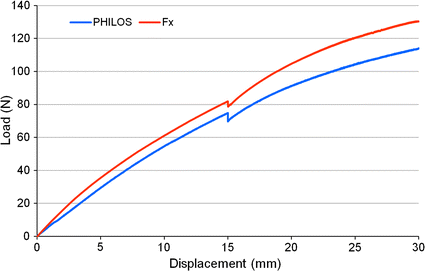Hybrid blade and locking plate fixation for proximal humerus fractures: a comparative biomechanical analysis
- PMID: 29370867
- PMCID: PMC5785900
- DOI: 10.1186/s12938-018-0447-y
Hybrid blade and locking plate fixation for proximal humerus fractures: a comparative biomechanical analysis
Abstract
Background: Open reduction and internal fixation of proximal humerus fractures can be difficult to achieve adequate, complication free results due to osteopenia of the proximal humerus and unstable fracture patterns. This study aimed to compare the biomechanical properties of a novel hybrid fixed angle blade plate (Fx plate) with an established fixed angle locking plate (PHILOS plate).
Methods: A two-part fracture was simulated in synthetic composite humeri by creating a transverse osteotomy and 10 mm fracture gap at the surgical neck. After treating the fractures with either an Fx plate or a PHILOS plate, humeral head was fixed and the shaft was displaced in a cantilever fashion. For elastic tests, loading was along the frontal and sagittal plane to achieve varus/valgus and extension/flexion, respectively. In plastic tests, loading was in a varus direction to determine the constructs' resistance to varus collapse.
Results: In elastic tests, both construct types had higher peak load and stiffness in extension/flexion than varus/valgus. Fx plate constructs were significantly stiffer than PHILOS constructs in varus/valgus (mean: 7.590/6.900 vs. 6.609/6.091 N/mm; p < 0.001 for both) but significantly less stiff in extension/flexion (8.770/9.541 vs. 9.533/9.997 N/mm; p < 0.001 for extension, p < 0.05 for flexion). In varus plastic tests, significantly higher peak loads were reported for Fx plate than PHILOS (134.391 vs. 115.531 N; p < 0.001).
Conclusions: In this fracture gap model, humeri implanted with a novel Fx plate provided higher varus/valgus stiffness but lower extension/flexion stiffness than a more traditional proximal humeral locking plate design (PHILOS).
Keywords: Biomechanical analysis; Blade plate; Locking plate; Plate fixation; Proximal humerus fractures.
Figures






References
Publication types
MeSH terms
LinkOut - more resources
Full Text Sources
Other Literature Sources
Medical
Miscellaneous

